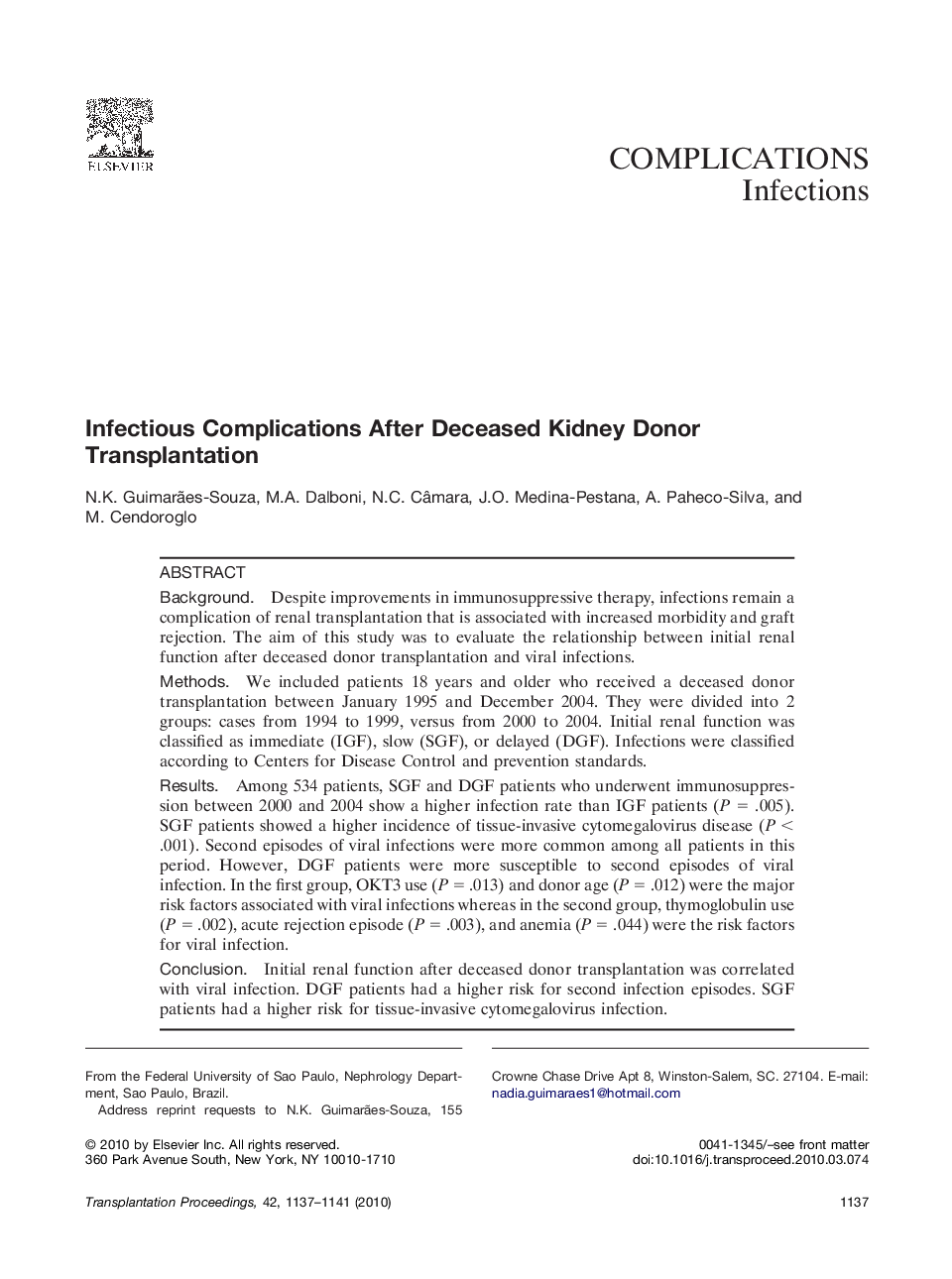| Article ID | Journal | Published Year | Pages | File Type |
|---|---|---|---|---|
| 4259610 | Transplantation Proceedings | 2010 | 5 Pages |
BackgroundDespite improvements in immunosuppressive therapy, infections remain a complication of renal transplantation that is associated with increased morbidity and graft rejection. The aim of this study was to evaluate the relationship between initial renal function after deceased donor transplantation and viral infections.MethodsWe included patients 18 years and older who received a deceased donor transplantation between January 1995 and December 2004. They were divided into 2 groups: cases from 1994 to 1999, versus from 2000 to 2004. Initial renal function was classified as immediate (IGF), slow (SGF), or delayed (DGF). Infections were classified according to Centers for Disease Control and prevention standards.ResultsAmong 534 patients, SGF and DGF patients who underwent immunosuppression between 2000 and 2004 show a higher infection rate than IGF patients (P = .005). SGF patients showed a higher incidence of tissue-invasive cytomegalovirus disease (P < .001). Second episodes of viral infections were more common among all patients in this period. However, DGF patients were more susceptible to second episodes of viral infection. In the first group, OKT3 use (P = .013) and donor age (P = .012) were the major risk factors associated with viral infections whereas in the second group, thymoglobulin use (P = .002), acute rejection episode (P = .003), and anemia (P = .044) were the risk factors for viral infection.ConclusionInitial renal function after deceased donor transplantation was correlated with viral infection. DGF patients had a higher risk for second infection episodes. SGF patients had a higher risk for tissue-invasive cytomegalovirus infection.
